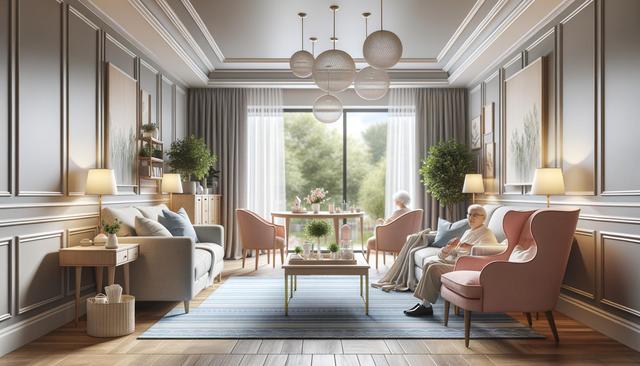Understanding Senior Apartments
Senior apartments are designed to cater to the needs and preferences of older adults, providing a lifestyle that balances independence with the convenience of assisted living amenities. These communities often include age-related features such as elevators, grab bars, and wider doorways, ensuring safety and comfort. It’s essential to understand that senior apartments offer a variety of living arrangements, from independent units to those with more comprehensive support services. When exploring these options, it’s important to consider the level of care required, the types of amenities available, and how these align with your lifestyle preferences.
Types of Senior Apartments
There are several types of senior apartments, each offering unique features and settings to suit individual needs. Independent living communities are ideal for those who can manage daily activities but prefer the convenience of on-site amenities and social activities. Assisted living apartments provide additional support, such as meal preparation and housekeeping, for those who need a bit more help. For those requiring more specialized care, memory care units offer environments specifically designed for individuals with Alzheimer’s or other forms of dementia. Understanding these differences can help in identifying the right community that matches your current lifestyle and future needs.
Finding the Right Senior Apartment
Finding the right senior apartment involves a blend of research, visits, and inquiries. Begin by listing priorities such as location, amenities, budget, and care level. Online resources and community guides are valuable tools in narrowing down choices. Schedule visits to potential apartments to get a sense of the environment and speak with residents and staff to gain insights into daily life and community culture. It’s also wise to inquire about waitlists, application processes, and fee structures to understand the full scope of the living arrangement. This thorough approach ensures that the selected senior apartment aligns with personal and financial expectations.
Securing and Negotiating Your Lease
Securing a lease for a senior apartment involves several steps, from application to finalizing the terms. Once a suitable apartment is found, the application process usually includes a review of financial documents and, in some cases, a health assessment. When negotiating lease terms, consider the benefits of long-term versus short-term leases, potential rent increases, and service packages. Some communities might offer introductory rates or discounts, so it’s worth asking about any available promotions. Understanding all terms clearly ensures that there are no surprises later on, allowing for a comfortable and stress-free transition into the new living environment.
Making the Most of Senior Apartment Living
Transitioning to a senior apartment is more than just a change in residence; it’s an opportunity to embrace a new lifestyle. Engage with community activities, which can range from fitness classes to cultural events, to build social connections and stay active. Many senior apartments offer educational programs and workshops, providing avenues for lifelong learning and personal growth. Establish a routine that balances privacy with social interaction to make the most of your living experience. Adapting to this new chapter with an open mind can lead to a fulfilling and enriched lifestyle, full of new friendships and hobbies.
Conclusion
Choosing a senior apartment is a significant decision that impacts lifestyle, finances, and well-being. By understanding the various types of apartments available, and carefully evaluating options based on personal needs, seniors can find a living situation that offers both comfort and community. Taking the time to explore, negotiate, and engage in the new environment ensures a smooth transition and a rewarding living experience. This process, while detailed, ultimately leads to a home where seniors can thrive and enjoy their golden years with peace of mind and satisfaction.
